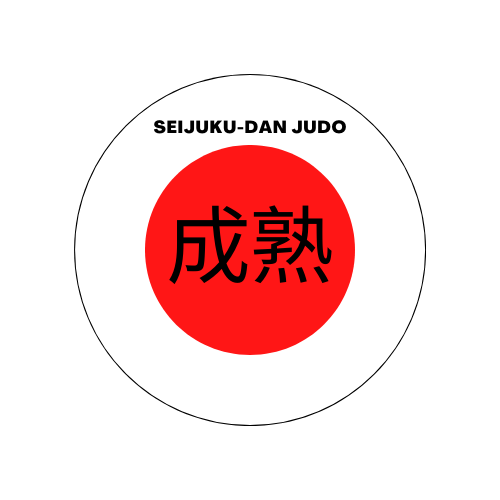Curriculum and Testing

Notes on Testing Criteria
The following are the promotional requirements for students of Seijuku Dan Judo:
The intention is to provide a defined basis for the encouragement and appreciation of the techniques and etiquette aspects that make up modern day Judo.
Important note: Seijuku Dan Judo is a United States Judo Association (USJA) affiliated club. Judo ranks will be awarded based on the minimum requirements set forth by the USJA as a foundation. Seijuku Dan Judo reserves the right to amend promotions per the individual student’s requirements, with adherence to the USJA baseline. The USJA test for Children and Adults may be found at the button below.
Children's test is titled: "Junior Rank Examination"
Adult's test is titled: "Rank Examination for all Senior Kyu Ranks Through Sandan"
The syllabus is designed to widen the knowledge of students by gradually adding techniques that are appropriate for the prospective individual.
Seijuku Dan Judo recognizes that every participant is different in their technique preferences, regardless if that is based on physical limitations, general preference, or other rationale. With this in mind, this curriculum is unique in that the student gets to work with the instructor(s) on their individual progression in a natural frame of work.
For example, a student who has a pre-existing shoulder injury may not be able to throw in a standard prescribed manner. A technique may have to be modified for that specific student, or techniques involving shoulder dominant movements may need to be removed from that student's preferred repertoire.
Students must not only demonstrate the physical techniques required, but also understand dojo etiquette, and the principles of their individual techniques (off balancing, execution, following through, opportunity for usage, etc.).
Seijuku Dan Judo encourages student participation in competition. Although not required, tournament participation is an important part of a developing martial artist’s training and helps build confidence and maturity in students. For those students that do not choose to compete in tournaments, consideration is also given to demonstrating a “fighting spirit” inside the dojo. Sparring and rolling are routine, if not a daily, incorporation in training.
Promotions are not provided on a guaranteed timeline; more emphasis/credit is given to technical capability versus time in the dojo. However, consistent attendance will absolutely assist the student on their journey. It takes three to six years for the average adult student to attain the coveted rank of Shodan. A black belt does not mean someone is an expert in the martial arts; it simply means their base education has truly begun.
The belt system can be thought of similarly to the American education system. Receiving a Shodan (1st degree black belt) is the equivalent of graduating High School. Receiving your Yondan (4th degree black belt) is the equivalent of earning your Bachelor’s, receiving your Rokudan (6th degree black belt) is the equivalent of earning your Master’s, and Judan (10th degree black belt) is the equivalent of earning your PhD.
Instructors will do their best to counsel the students on the knowledge required for the successful promotion to the next rank. However, it is possible to be delayed in one’s promotion timeline. In this case, students will be informed of the areas that were not satisfactory and encouraged to continue practicing.
Time In Grade
For adults, there are 7 colored Kyu belt ranks (white, yellow, orange, green, and brown) with 3 levels of brown belt (3, 2, and 1). Adults have a separate system from children.
For children, there are 9 colored Kyu belt ranks (white, yellow, orange, green, blue, purple, and brown). This helps separate youth from adults on the mat. Each colored belt for children (with exception of the white belt) have a junior and senior grade. At SDJ, we designate the "senior" version with a black stripe on the end of the belt. Having the youth separated by junior and senior grades makes the test more palatable for children, giving much needed reassurance and time for measured growth. Including the starting white belt, there are 13 ranks with the inclusion of junior and senior steps for youth.
There are 10 black belt ranks. Black belt ranks are called Dan. In total, there are 17 official adult ranks. In the Japanese arts, Kyu designates a grade, where Dan designates a student. You are not considered a true "student" of Judo until you receive a Dan belt, signifying that you have the baseline education necessary to understand Judo philosophically as an entire system rather than just technically.
Time in grade for all ranks is to be considered as the minimum. Actual time in grade from one belt to the next may vary considerably. The overall time in grade should be followed closely. This means that a person may spend more than the allotted time in one rank, then be promoted relatively quickly as they catch up to the rank with which their total time in grade corresponds. At no time should an individual be promoted beyond the rank for total minimum time in grade.
Validations
If you have been training Judo for a long period of time without an instructor to do the administrative work of promotion you with a governing body, SDJ via the USJA can do it for you! The USJA has a validation process, where a candidate may test for an appropriate Judo rank based on performance. Please contact us if you are interested in validating your Judo rank.
Promotion to black belt and beyond is strictly enforced by the USJA. Expedient promotion through the ranks is granted based on the system established by the USJA. Please refer to the USJA’s requirements for more details on their website, https://www.usja.net/ or click on the image below.
USJA